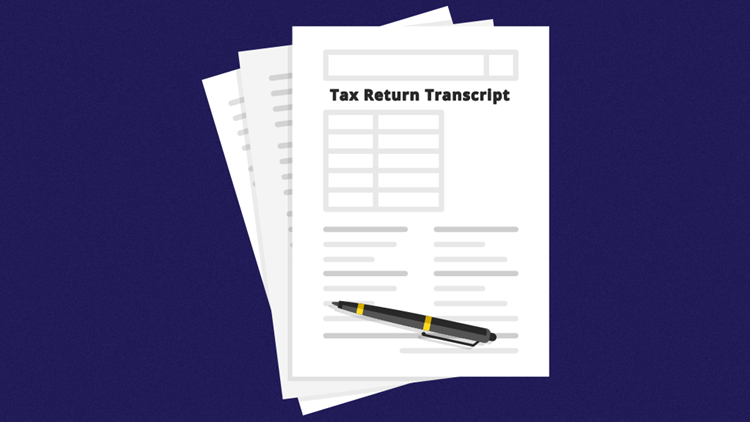
by | Nov 30, 2021 | Tax Tips and News
Now that the IRS is putting the wraps on the last installment of the Advance Child Tax Credit payments for 2021, some taxpayers who didn’t apply for other credits might get a reminder to do a little extra checking.
For some taxpayers, these notices may be the gateway to an additional refund from the IRS.
Taxpayers could get one or both of two possible notices—either a CP08 or a CP09, depending on their circumstances—and they may not understand why they suddenly got a letter from the IRS out of the blue.
Here’s a brief rundown.
Understanding the CP08 Notice
Both notices could be considered a reminder of sorts, dealing with IRS tax credits. The CP08 notice is for taxpayers who may qualify for the Additional Child Tax Credit and could be eligible to receive additional money.
This notice urges taxpayers to read its instructions carefully and to fill out the Additional Child Tax Credit worksheet that’s attached to Form 15110.
If the worksheet verifies that the taxpayer has at least one qualifying child, the taxpayer should sign and date the Form 15110 and fill out Form 1040 Schedule 8812, Additional Child Tax Credit.
The Form 15110 and the Schedule 882 should be mailed to the IRS in the provided envelope.
If the envelope that’s provided is lost or otherwise cannot be used, the address for the correct IRS service center is printed in the top left corner of the notice.
Once mailed, the documents go to the IRS for review. Taxpayers who successfully claim the credit should get their refunds in about eight to 10 weeks. Those who are denied will get a letter from the IRS telling them why they were turned down.
To find more information about the Additional Child Tax Credit, see Publication 972, the Child Tax Credit and Credit for Other Dependents; and the Instructions for Form 1040.
Understanding the CP09 Notice
The CP09 notice reminds taxpayers they may qualify for the Earned Income Tax Credit, also known as the EITC, but they failed to claim the credit the last time they filed a return.
The EITC is a credit for taxpayers who work and have earned income. The credit could give some taxpayers a refund, even if they don’t owe any tax.
After reading this notice carefully, recipient taxpayers should fill out the Earned Income Tax Credit worksheet on Form 15111 that accompanies the notice.
If the worksheet shows the taxpayer is qualified for the credit, Form 15111 should be signed and dated, then mailed in the envelope that came with the notice. Like the CP08 notice, the CP09 notice must be sent to the proper IRS processing center.
If the provided envelope isn’t available, taxpayers should mail their completed documents to the IRS address in the top left of their notice.
Taxpayers who are not qualified for the credit should not mail Form 15111 to the IRS; no other action is needed in that case.
Taxpayers who are eligible after review for the credit should get their refund checks in about six to eight weeks, if they don’t owe any back taxes or other debts that the IRS is required to collect.
Taxpayers who are rejected by the IRS review are sent letters of explanation.
For more information on the Earned Income Credit, see Publication 596, Earned Income Credit, or visit the EITC webpage on IRS.gov.
Sources: Understanding Your CP08 Notice; Understanding Your CP09 Notice
– Story provided by TaxingSubjects.com

by | Nov 30, 2021 | Tax Tips and News
Cyber Monday traditionally closes out the busiest holiday shopping weekend of the year, which sees Americans swarming stores and crawling websites for post-Thanksgiving sales. Despite predictions of fewer in-person shoppers and eye-popping deals, there’s no doubt that consumers want to get the best bang for their buck.
Unfortunately, that laser-like focus puts Americans at risk of falling victim to the myriad phishing scams deployed this time of year. After all, people are even more likely to click on unsolicited sale emails and web ads when they’re desperately trying to track down The Perfect Gift™.
To help combat these holiday scams, the Security Summit is kicking off this year’s National Tax Security Awareness Week with ten tips for keeping your information out of criminals’ hands on Cyber Monday (and beyond).
What is the Security Summit?
The Security Summit is an organization composed of the Internal Revenue Service, state departments of revenue, and private members of the tax industry. They provide data-security recommendations and raise awareness of tax-based scams and threats.
What is National Tax Security Awareness Week?
National Tax Security Awareness Week is the Summit’s annual data security awareness campaign. For six years, they have promoted data security tips and highlighted phishing scams in an effort to combat identity theft tax refund fraud and other online data theft crimes.
How do I safely shop on Cyber Monday?
The Summit recommends taxpayers do these ten things to prevent data theft:
- Don’t forget to use security software for computers, tablets and mobile phones – and keep it updated. Protect electronic devices of family members, especially teens and young children.
- Make sure anti-virus software for computers has a feature to stop malware, and there is a firewall enabled that can prevent intrusions.
- Phishing scams – like imposter emails, calls and texts — are the No. 1 way thieves steal personal data. Don’t open links or attachments on suspicious emails. This year, fraud scams related to COVID-19, Economic Impact Payments and other tax law changes are common.
- Use strong and unique passwords for online accounts. Use a phrase or series of words that can be easily remembered or use a password manager.
- Use multi-factor authentication whenever possible. Many email providers and social media sites offer this feature. It helps prevent thieves from easily hacking accounts.
- Shop at sites where the web address begins with “https” – the “s” is for secure communications over the computer network. Also, look for the “padlock” icon in the browser window.
- Don’t shop on unsecured public Wi-Fi in places like a mall. Remember, thieves can eavesdrop.
- At home, secure home Wi-Fi with a password. With more homes connected to the web, secured systems become more important, from wireless printers, wireless door locks to wireless thermometers. These can be access points for identity thieves.
- Back up files on computers and mobile phones. A cloud service or an external hard drive can be used to copy information from computers or phones – providing an important place to recover financial or tax data.
- Working from home? Consider creating a virtual private network (VPN) to securely connect to your workplace.
While many of these tips are straightforward, two can be a little trickier to follow: knowing how to deal with phishing scams and getting a reputable VPN.
When it comes to avoiding phishing scams, here are three general tips:
- Don’t open unsolicited emails or social media messages.
- Don’t click links in emails, social media messages, or website ads.
- Don’t assume the sender name on emails and social media messages is who actually sent the message—criminals can and will impersonate or take over individual and business accounts.
Remember, if something seems too good to be true, it probably is. Instead of following links in emails or social messages, visit the company’s website directly.
As for finding a VPN that’s a good fit for your office, check out the “Working Virtually: Use a virtual private network to secure remote locations; Part 3 of Security Summit tips for tax professionals” press release.
Where can I find additional data-security resources?
The IRS closed their press release with links to the following resources:
What will the Security Summit cover next?
Tomorrow, the Security Summit has tips for avoiding fake charity scams—just in time for Giving Tuesday!
Sources: IR-2021-233; IR-2021-236
– Story provided by TaxingSubjects.com

by | Nov 27, 2021 | Tax Tips and News
In October, we told readers about IRS relief measures that applied to some 19 Mississippi counties impacted by Hurricane Ida. That relief has now been expanded to add 63 other counties, covering the entire state, and pushing various tax filing and payment deadlines to Jan. 3, 2022.
The expansion of the IRS relief was put in motion by the Federal Emergency Management Agency (FEMA) and its decision to add the remainder of the state’s counties to the 19 that had already been designated as eligible for federal disaster aid due to Hurricane Ida.
The current list of eligible locations can be found on the disaster relief page of IRS.gov.
The relief period previously applied to the 63 newest counties by the IRS expired November 1.
What is the structure of the relief?
The newest round of IRS relief follows a pattern used with a number of U.S. disasters this year. It postpones various tax filing and payment deadlines that started on Aug. 28, 2021. Individual taxpayers and businesses within the new disaster area—namely, the entire state of Mississippi—now have until January 3 to file their returns and pay any taxes that would have been due during that time.
Individual taxpayers with valid extensions, however, should remember that while they have until Jan. 3, 2022 to file their extended returns, they do not have extra time to pay their tax due. Those payments were due on the original due date of their returns, May 17, so they aren’t covered by the IRS extended deadline.
Business deadlines are extended
Business taxpayers also have a number of deadlines extended through the IRS relief.
Quarterly estimated income tax payments normally due in September and quarterly payroll and excise tax returns otherwise due in November are all due now on January 3.
Other business filings have also been extended, including:
- Businesses with an original or extended due date
- Calendar-year partnerships and S corporations with 2020 extensions that ran out in September
- Calendar-year corporations with 2020 extensions that ran out in October
- Calendar-year tax-exempt organization with 2020 extensions that ran out in November
For details on other types of returns, payments and other tax actions that qualify for the extended deadline, see the IRS disaster relief page.
Relief is automatic
There’s no need for taxpayers—whether individual or business—to contact the IRS to see if they qualify for the extended deadlines. Here’s how it works:
The IRS screens each return, checking the taxpayer’s address of record. Addresses within the disaster area are automatically given all the benefits in the relief package.
Some taxpayers may get late-filing or late-payment notices due to the circumstances of the disaster; those taxpayers within the disaster area can call the telephone number printed on the notice to have the penalty abated.
Taxpayers who qualify for relief but live outside the disaster area should call the IRS at 866.562.5227. This includes taxpayers whose tax records needed to meet a deadline are inside the disaster area, and relief workers who live outside the disaster area but are helping with the recovery effort and work for a recognized government or philanthropic organization.
Claiming a loss on returns
Taxpayers claiming uninsured or unreimbursed losses due to Hurricane Ida can choose to claim those losses on the return for the year the loss occurred (meaning the 2021 return normally filed next year), or on the prior year return (2020).
In either case, taxpayers are reminded to write the FEMA disaster declaration number on the return claiming the loss: EM-3569 for a return claiming a loss under the original disaster declaration, or EM-4626 for a return claiming a loss under the expanded declaration.
See Publication 547 for more about claiming a loss on tax returns.
The IRS says its tax relief measures are based on local damage assessments by FEMA and are part of a coordinated federal response to the disaster. See DisasterAssistance.gov for more on disaster and the federal response.
Source: IR-2021-230
– Story provided by TaxingSubjects.com

by | Nov 27, 2021 | Tax Tips and News
The Internal Revenue Service is making a pitch about the Advance Child Tax Credit payments that smacks of the spiel for sale pricing from used car dealers: “When it’s gone, it’s gone!”
The IRS—thankfully minus the loud plaid sport coat—says after November 29, taxpayers won’t be able to post any changes in their income and get a larger payment on December 15, the last scheduled payment in 2021.
Any income updates must be posted through the Child Tax Credit Update Portal (CTC-UP) by 11:59 p.m. Eastern Time on November 29 to be included in the December payment.
The portal can be accessed at IRS.gov/childtaxcredit2021.
The IRS also had good news for Spanish speakers this week, launching a Spanish-language version of the CTC-UP that helps more families update their income figures ahead of the last remaining advance payment.
Advance payments of the CTC were made possible by the American Rescue Plan. Most qualifying families started getting their advance payments in July.
Eligible families could get advance payments of up to $300 monthly for each child under the age of 6, and up to $250 per month for each child between the ages of 6 and 17.
Payments were based on 2019 or 2020 filed returns, although some recipients registered online through the Child Tax Credit Update Portal to qualify. The CTC-UP was pivotal, allowing taxpayers to verify the qualifications for the credit, but also gave them the ability to perform other actions:
- Switch from receiving a paper check to direct deposit;
- Change the account where their payment is direct deposited;
- Update their mailing address;
- Stop monthly payments and
- Report significant changes in their income that could potentially raise or lower their monthly payments.
The advance payments, however, are only half the Child Tax Credit story. The advance payments amount to only half of the total credit amount for any taxpayer. The taxpayer receives the remaining half of the credit when they file their 2021 income tax return next year.
Families who got advance payments of the CTC in 2021 will also receive Letter 6419 early next year, documenting the advance payments they received in 2021 and the number of qualifying children they reported to figure their advance payments.
What’s on tap for 2022?
Advance payment of the Child Tax Credit may not be on the table for next year, but that doesn’t mean the credit will be out of reach of deserving taxpayers.
The IRS says eligible families—whether they typically file a return or not—will be able to receive a lump-sum payment of the CTC once they file a 2021 return next year.
To that end, the agency is encouraging its industry partners and community groups to share information and to use available online tools to help low-income families, non-filers and other underserved groups learn about the benefits of the Child Tax Credit and how to sign up.
Links to these online tools, answers to frequently asked questions and other resources can be found on the IRS’ special advance CTC 2021 page.
Source: IR-2021-235
– Story provided by TaxingSubjects.com

by | Nov 22, 2021 | Tax Tips and News
The Internal Revenue Service says tax professionals spoke—and the agency listened. After getting comments from tax pros, the IRS has now increased the number of transcripts a professional preparer can get on any one client.
The previous limit was 10 transcripts for a single client, but now, the IRS says, practitioners can get up to 30 Transcript Delivery System (TDS) transcripts for a client using the Practitioner Priority Service line, also called PPS.
A variety of transcript types can be obtained through PPS and tax pros can order transcripts for up to five clients in a single call. The number of clients on a single call, however, hasn’t changed.
The new, increased limit covers:
- Tax Return Transcripts
- Tax Account Transcripts
- Wage and Income Transcripts
- Records of Account
- Verification of Non-Filing Letters
Other transcripts continue to be limited to 10 per client and will count toward the total of 30 transcripts per client.
“Increasing the number of transcripts a caller can receive addresses the concerns the IRS has received from PPS callers. This is another example of addressing concerns from our partners and stakeholders,” said Ken Corbin, the Wage and Investment Commissioner and the IRS Taxpayer Experience Officer.
Tax professionals can still order TDS transcripts through the Transcript Delivery System application, found on IRS.gov.
For individual taxpayers, the IRS tool Get Transcript is still the fastest way to get a transcript.
It’s worth remembering that while a transcript can show return and account data, it’s not a direct copy of the actual return. If a photocopy of a return is needed, complete and mail Form 4506, Request for Copy of Tax Return, along with the applicable fee.
More information about tax transcripts and delivery options can be found at Transcript Types and Ways to Order Them on IRS.gov.
Source: IR-2021-226
– Story provided by TaxingSubjects.com






